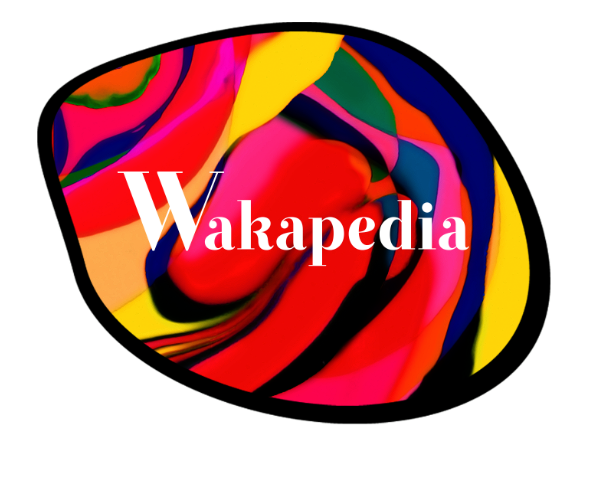Venice Art Biennale 2022. Seven must-see national pavilions!
Postponed due to the pandemic for three long years (something which only happened around the time of the World Wars) the Art Biennale has finally returned to Venice and is on view until November 27, 2022.
The biennale is highly anticipated by contemporary art buffs like us (to find out more, reread our 2019 article here). This year’s 59th edition is curated by Cecilia Alemani. The Italian chose a fantastic and evocative theme entitled “The milk of dreams”. At first, we thought: the milk of what? Like, to drink? So we did some research (it may not seem like it, but we are studious!) and found that it comes from the title of a children’s book by the surrealist Mexican artist and writer Leonora Carrington (1917-2011). Alemani took inspiration from Carrington’s magical universe, where the imagination and our perennial capacity for reinvention and transformation reign supreme. The curatorial proposal develops around three broad themes: the metamorphoses of bodies and their representations, the relationship between individuals and technology, and the forces that bind bodies to the Earth. For the first time, the exhibition at the central pavilions (in both Giardini and Arsenale) is marked by a predominance of female artists and gives much more space with respect to past editions to non-Western, non-white, and non-binary cultures. This is a wonderful intention, of course, but is the result perhaps too “woman-friendly” or wokeist at all costs? We shall let you be the judge!
“The milk of dreams” unites many artists that are already well-known — from Katharina Fritsch and her monumental elephant, to Simone Leigh’s imposing bronze bust, or the grotesque and disturbing canvases by Paula Rego — but it also highlights works by many female creators who are less media-hyped but just as brilliant. There’s really something for everyone’s taste! Another intriguing novelty of this edition are the thematic capsules that Alemani conceived of as little exhibitions inside the exhibition. These are dedicated to historic artists and allows us to reinterpret and compare the contemporary to the past. The perfect place to leave one’s mother who has had it with contemporary art and just wants to see “paintings like in museums” (#truestory).
With over 200 artists, the exhibition in the central pavilions of Giardini and Arsenale is really a must-see. It is so rich that you can easily spend an entire day (or two) admiring the works of art and, of course, enjoying the blasting air conditioning which is a real plus during the Venetian summer, let’s be honest!
But don’t think that you’ve finished and that you can go drink a spritz along the canal, no-no-no! There are another 80 national pavilions left to visit! But if you don’t have a lot of time or if your feet hurt too much, don’t panic. We prepared a personalised and (absolutely not exhaustive) TOP 7 list just for you. Makes life easy, doesn’t it?
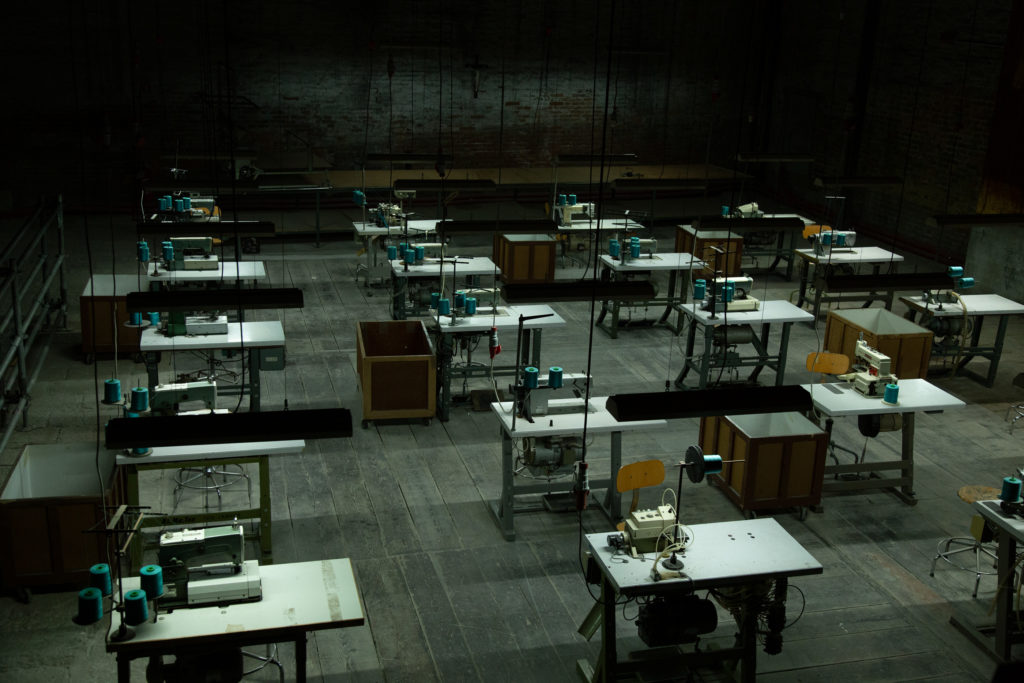
The most immersive and alienating | Italy Pavilion, Arsenale
Gian Maria Tosatti, History of the Night and Destiny of the Comets
Silence, please. This immense installation must be visited alone and without making a single noise. The Italian pavilion is an immersive and alienating experience set inside an old abandoned factory. The machines are turned off, the workman’s apartment is uninhabited, an old radio is tuned to a soccer game, and an army of sewing machines rests mutely in the neon light, suggesting a sudden halt in production. The waning of the Italian economic miracle and of the working class associated with it, is made palpable in the quasi-religious silence. The artist Gian Maria Tosatti offers a reflection on the consequences of the pandemic and invites us to question the economic development of contemporary societies and the relationship between Man and Nature. At the end of the exhibition itinerary, faint streaks of light appear in the darkness. They reveal themselves to be comets that, like humans, illuminate the sky for fleeting moments as they cross the universe.
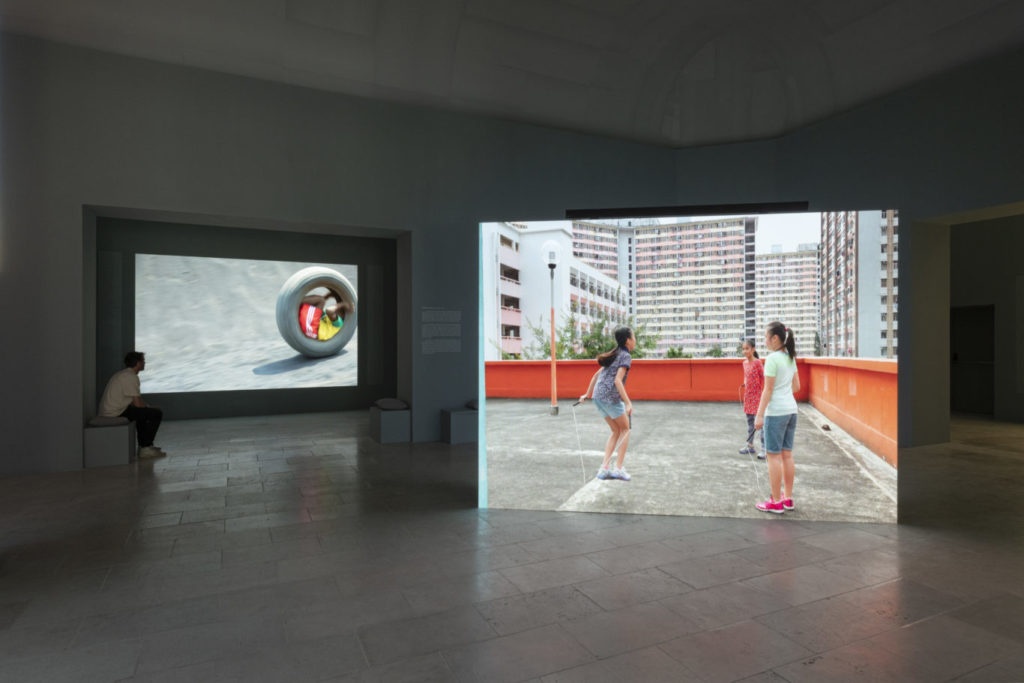
The most feel-good | Belgium Pavilion, Giardini
Francis Alÿs, Children’s Games
Crossing the threshold of the Belgium Pavilion, one has the feeling of going back to school during the recess period. Children’s joyous shouts and laughter cascade from various screens that show images of the series Children’s Game that the artist Francis Alÿs started filming in the 1990s. From Belgium to Hong Kong, with time spent along the way in Congo and Switzerland, he immortalised dozens of children all over the world at play (a natural activity that is also fundamental for the construction of the individual). The allure of these short films — that document everything from snail races and snowball fights to hopping over pedestrian crossings and rapid descents in old junkers — lies in their spontaneity and simplicity. But these seemingly lighthearted images remind us of a profound truth: to be happy you don’t need much, it’s enough to be a kid again.
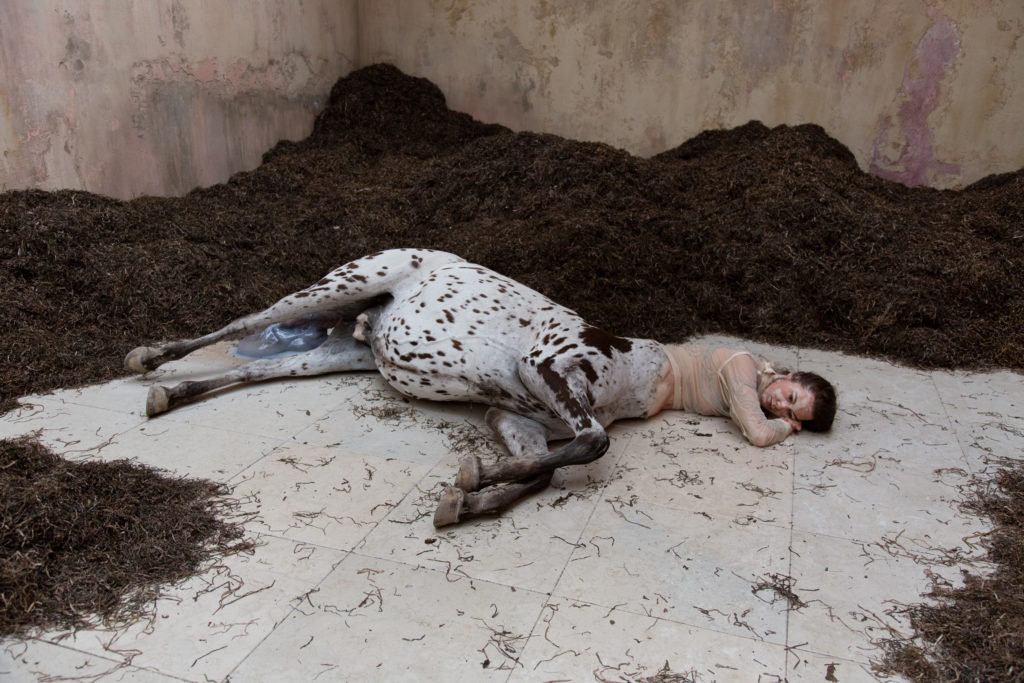
Most instagrammed | Denmark Pavilion, Giardini
Uffe Isolotto, We Walked the Earth
Perhaps not the best pavilion, but certainly the most instagrammed! At the Denmark Pavilion, Uffe Isolotto transports us to a dystopic universe where the rural world and that of science fiction merge. Strewn with black hay, repugnant objects, organs, rotten fruit, and excrement, the traditional Danish farm is transformed into a macabre and time-worn landscape. A hyperrealistic centaur hangs by his neck from the ceiling while another lies on the ground nearby, pale and washed-out looking, after having given birth to a new hybrid still encased in its bluish placenta. Scarred by the suicide of his own father, the artist describes his exhibition as a “tormented theatre of life and death”. Not recommended for more sensitive viewers!
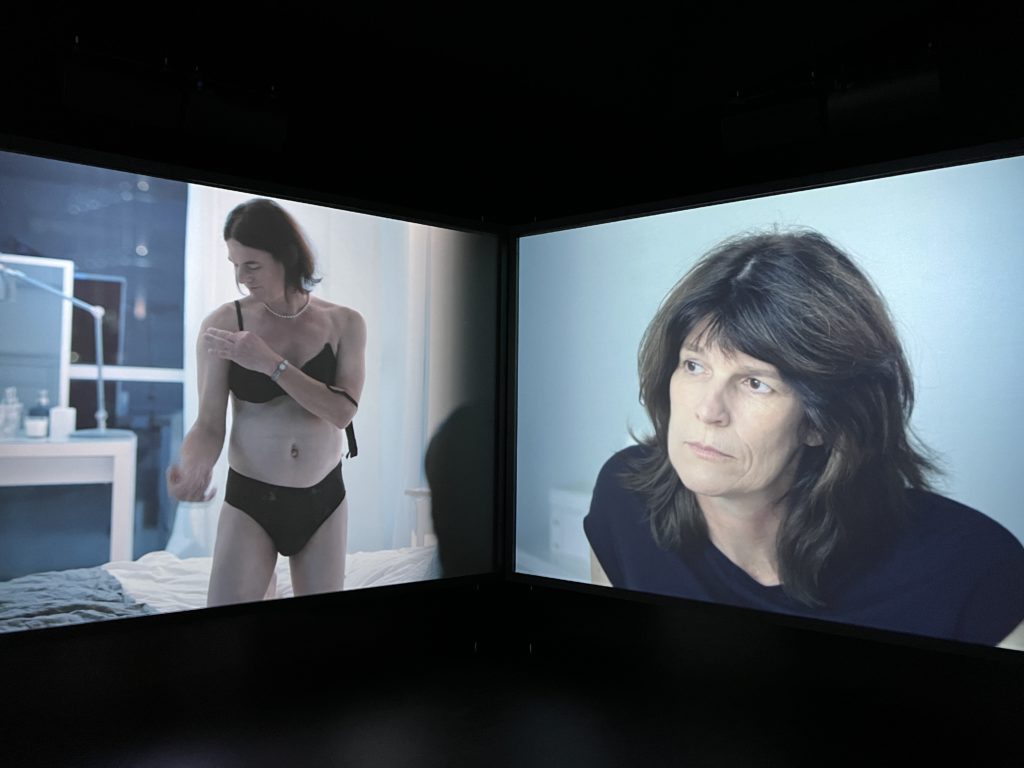
The most intimate| Romania Pavilion, Giardini
Adina Pintilie, “You Are Another Me – A Cathedral of the Body”
Artist and director Adina Pintilie’s monumental video installation transforms the Romania Pavilion into a “cathedral of the body”. On the large screens that seem to float in the dark room, the bodies of her friends and acquaintances present themselves majestically to our gaze. We admire them in many different intimate situations — they dance, scream, eat, embrace, listen to each other breathe, and even let themselves go, at the apex of pleasure in full orgasm. The minimal, technological, and cold decor of the space contrasts with the warm humanity, candour, and unaffected simplicity of the moving images.
In a society in which discrimination and extreme right ideology threaten the liberty of each of us in deciding who to be and what to do with our bodies, this work celebrates the connection between individuals beyond differences in age, gender, and sexual orientation.
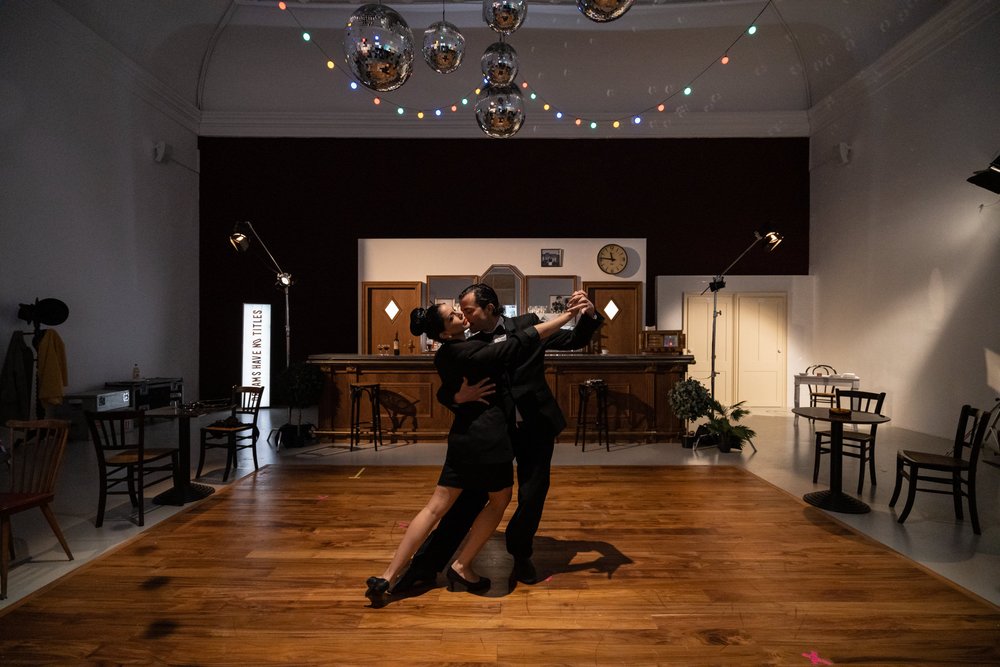
The most cinematographic| France Pavilion, Giardini
Zineb Sedira, Les rêves n’ont pas de titre
You’re not in Hollywood, but you are in a big, immersive, cinematographic installation by the French-Algerian artist Zineb Sedira. Using autobiography, fiction, and documentary, she weaves together the history of her family and of her community with that of the political cinema of the 60s and 70s (a period of cultural and political ferment concomitant to the second decolonisation of Africa and the first coproductions between France, Italy, and Algeria). Inside the exhibition space, visitors can explore real film sets, sit in the London living room of the artist, or relax in the nostalgically decorated ballroom and dining room (complete with lots of string lights, très joli!). Zineb Sedira invites us to “dance to resist, dance to be reborn, dance to dream…and, for her, dreams have no titles”. The original and poetic treatment of postcolonial issues as well as relevant contemporary themes like immigration, solidarity, resilience, and collective memory, earned the France pavilion special mention by the jury.
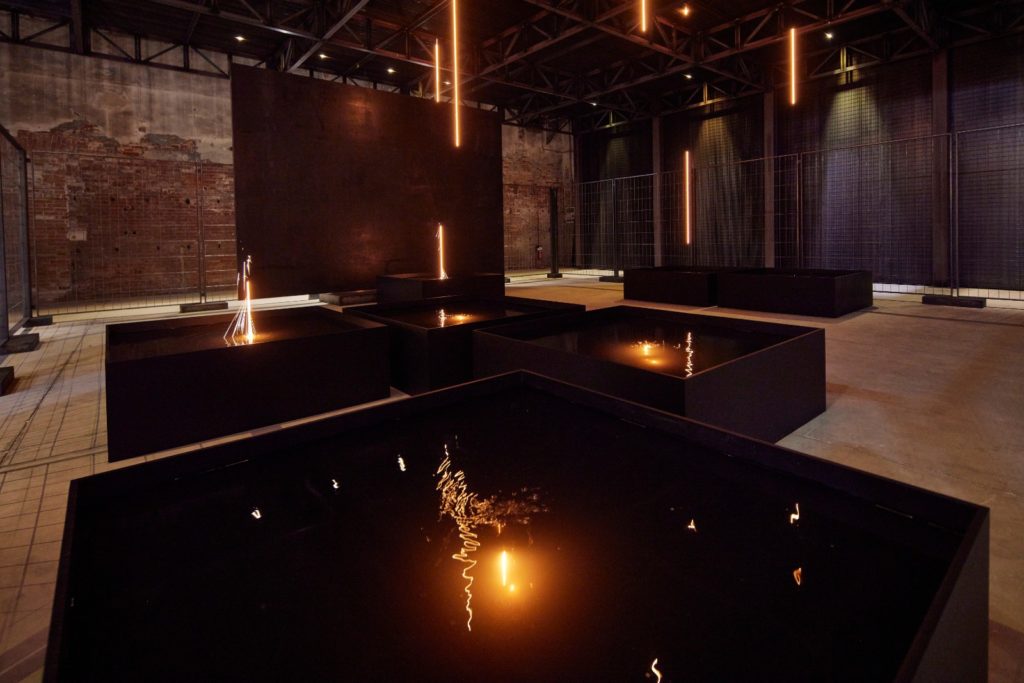
The most Caravaggesque | Malta Pavilion, Arsenale
Arcangelo Sassolino, Giuseppe Schembri Bonaci, and Brian Schembri, Diplomazija Astuta
You may ask yourselves: what does late sixteenth century painter Caravaggio have to do with the Biennale? The surprising and original Malta Pavilion proposes a contemporary and minimalist reinterpretation of the altarpiece The Beheading of St. John the Baptist. The installation is composed of seven rectangular tubs filled with water, each representing a subject in the pictorial oeuvre of Caravaggio. Via induction technology, small drops of liquid steel fall from the ceiling into the tubs, creating glimmers of light that lacerate the darkness of the room at random intervals. This work is not only a brilliant kinetic and scenographic revisitation of the celebrated Caravaggesque chiaroscuro, but is also a reflection on the hope that humanist principles such as respect and sharing can break the cycle of violence and tragedy of the past.
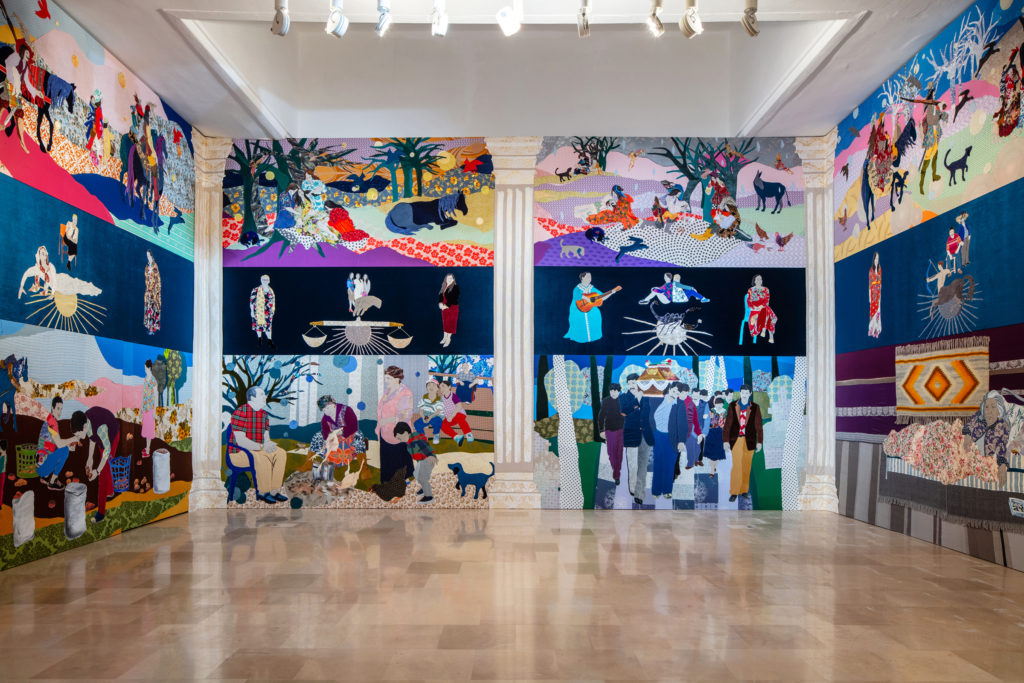
The most allegorical | Poland Pavilion, Giardini
Małgorzata Mirga-Tas, Re-enchanting the World
The Poland pavilion presents another fresh and successful revisitation of a masterpiece of Italian art. Małgorzata Mirga-Tas’ project references the cycle of frescos in Palazzo Schifanoia, the jewel of the Ferrarese renaissance. Here, she rethinks both the technique and the subjects to recreate the three strata of the original frescos. The classic Italian iconography is replaced by representations of the Roma people and its traditions using large-scale patchwork of coloured textiles. In the top register, the artist illustrates the mythical journey the Roma made to Europe. At the centre, ancient zodiac signs are reinterpreted in a pop style. At the bottom, the allegories of the Renaissance have been substituted by scenes of the daily life of the community during the twelve months of the year. Scenes such as plucking a chicken, playing cards, and burying the dead are an audacious and brilliant contemporary revisitation of traditional European iconography. This creates a positive representation of the largest minority in Europe. Art definitely has the power to re-frame history.
Edited by: Kassanda Frua De Angeli





